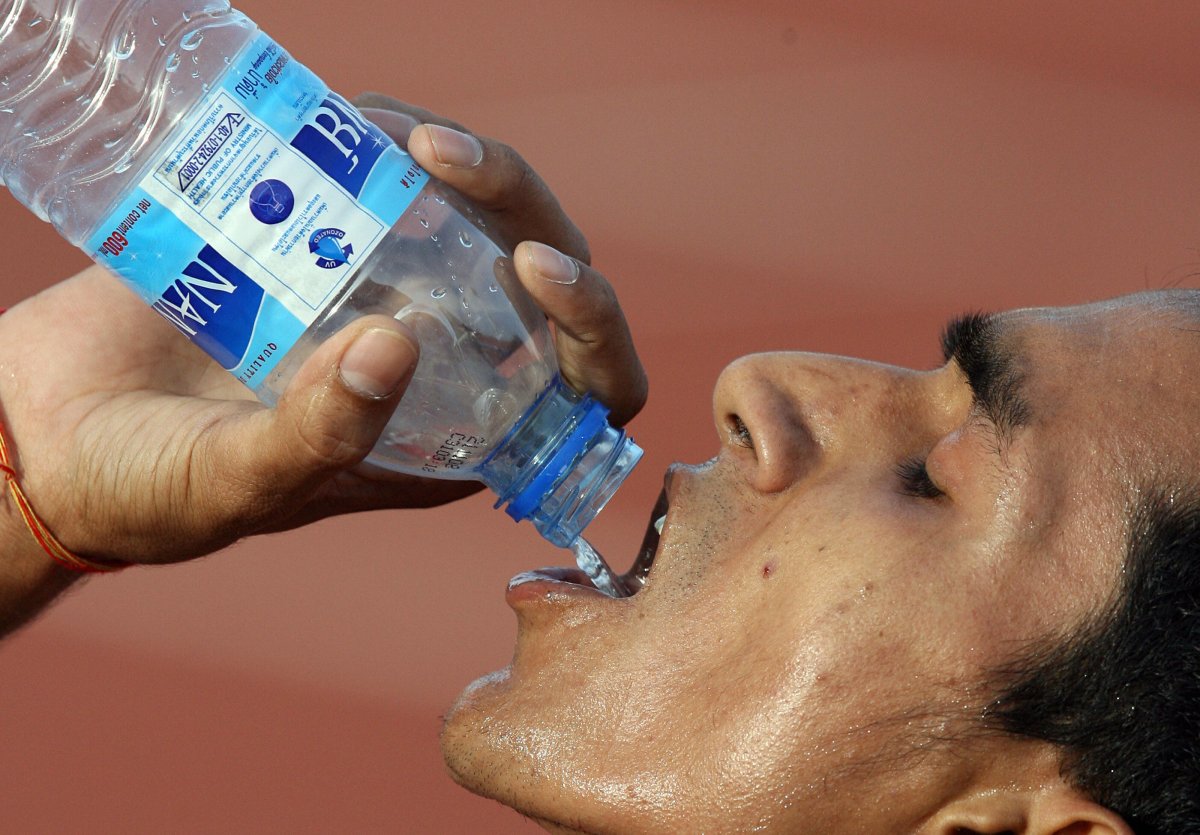Licking a dog’s toy or toilet seat would expose you to less bacteria than the average reusable bottle of water. At least that’s what a recent germ study will have you believe.

The water bottle study, commissioned by Minneapolis-based fitness website Treadmill Reviews, claims “the act of quenching your thirst while you exercise could potentially make you sick.”
The warning comes following a test of four different types of bottles: squeeze-tops, screw-tops, slide-tops and straw-tops. They were swabbed after being used for a week without being washed.
The findings
Here are some highlights:
- “99 per cent of the germs on the squeeze-top bottles and 98 per cent of the germs on the screw-top bottles are the bad kind – gram-negative rods (of which E. coli is one example). These types of germs have been known to cause conditions such as pneumonia and blood infections in health care settings, and they can even resist antibiotics.”
- Slide-top bottles were the most germ-ridden. “Half of the bacteria on those containers have the potential to harm,” the researchers said. “Along with gram-negative rods, the bottles harbored gram-positive cocci, which can lead to skin infections, pneumonia, or blood poisoning.”
- Straw-top bottles were the big winner. They “barely contained any bacteria to begin with” and the ones they did have were mostly “harmless.”
- “When it comes to water bottles and bacteria, stainless steel is a better choice than plastic.”
- “Don’t let your half-full bottle sit in your gym bag.”
What the germ expert says
“It’s absolutely hilarious,” Canadian microbiologist Jason Tetro said of the study. “I sort of laughed.”
“I can understand why they would’ve done this because it’s a really great marketing ploy…But at the end of the day, if you don’t see anything that actually tells you a Latin name or an actual risk to your health and it’s just generalized concepts, it’s probably what I would call a ‘fear’ study.”
Tetro, who’s authored The Germ Code and The Germ Files, explained it’s not really a surprise there’d be more bacteria in a water bottle than on a toilet seat.
Your toilet seat “only touches your tush,” Tetro pointed out. And skin isn’t really a great host environment for bacteria.
- Posters promoting ‘Steal From Loblaws Day’ are circulating. How did we get here?
- 3 women diagnosed with HIV after ‘vampire facials’ at unlicensed U.S. spa
- Canadian food banks are on the brink: ‘This is not a sustainable situation’
- Solar eclipse eye damage: More than 160 cases reported in Ontario, Quebec
“But your mouth is wet. It has all sorts of really good nutrients for microbes.
“And as soon as they’re put in … the nice, warm environment of room temperature — and a surface — whether it be glass, steel, plastic… They can grow … and their numbers can explode.”
READ MORE: 5 things you need to know about bacteria
For the most part, though, Tetro assured there’s nothing to worry about because “it’s just your own bacteria.” There are only a few bacteria that can cause infection, he said, and most of those you get from other people.
There are, however, signs to watch for that your home-grown colony has gotten a little out of hand.
Gauging the cleanliness of a bottle
The first clue is the sheen of something called biofilm. It’s basically a bunch of bacteria that’s clustered together.
“You can definitely taste bacteria at certain levels because they produce these by-products,” Tetro said.
Spare yourself the taste test and give your water a whiff. If it’s gone funky, you should be able to smell it.
Tetro prides himself in being able to identify bacteria by its scent. Some smell like grapes, he said. Others are more like decomposing bodies.
READ MORE: What are the dirtiest spots in hotel rooms?
How to properly clean your water bottle
Tetro doesn’t suggest a straw-top bottle, as the study recommends, because cleaning that thing can be tricky. He feels you’d be better off with a lid that you can wash (effectively) on a regular basis.
And investing in those pricey stainless steel bottles won’t save you from germs. His go-to bottle is a wide-brimmed one with limited crevices. He also has a squeeze-top bottle.
“I soak that puppy in hot water at least once every few days. I just put hot water and soap and leave it there.”
Let your bottle soak at least an hour. “Not just two or three seconds or minutes… It’s the same thing if you’re using vinegar.”
Then give it a good soapy rise in hot water. Bust out the bristle brush if you have to.
READ MORE: These are the dirtiest places in your office
You could probably go a couple days without washing your bottle (depending on how much backwash got in there), Tetro said.
But you might as well give it a rinse every day —just to be on the safe side.
WATCH: This is what happened when cellphones were tested for germs




Comments